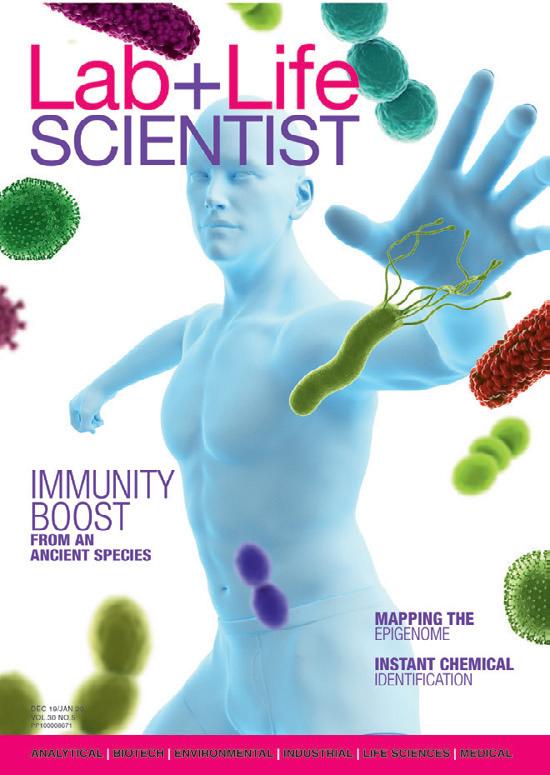
14 minute read
DIAGNOSTIC TEST
Malaria is caused by a parasite which infects red blood cells. In this image you can see red blood cells (purple), one of which contains malaria parasites (coloured specks).
An international research team has developed a new diagnostic test to track the spread of infectious diseases such as malaria in populations and target resources where they are most needed.
The new diagnostic approach has the potential to enhance infectious diseases surveillance, and so is now being adapted to track immunity to COVID19. Development of the technique was led by the Walter and Eliza Hall Institute (WEHI, Australia), the Pasteur Institute (France) and Ehime University (Japan), and has been described in the journal Nature Medicine.
Exposure to viruses, parasites or bacteria triggers immune responses that lead to antibodies circulating in the blood. These antibodies can remain for years, but over time the amount of different types of antibodies changes.
The new diagnostic technique allows researchers to look in detail at the amounts of different antibodies in the blood, to pinpoint whether — and when — a person has been exposed to a particular infection. That’s according to Professor Ivo Mueller, who led the research and has joint appointments at WEHI and the Pasteur Institute.
“Many tests for immunity give a simple ‘yes or no’ answer to whether someone has antibodies to the infectious agent,” he said. “In contrast, our test — which was initially developed to look at malaria infections — can pinpoint how long ago a person was exposed to an infection.
“This information is extremely valuable for tracking the spread of an infection in a population. Particularly in lower income countries it may not be possible to monitor the actual spread of the infection, but it is very helpful to look retrospectively at whether the infection has been spreading — and to monitor the effectiveness of infection control programs, and respond to disease resurgence.”
The technique was initially established to understand the spread of relapsing Plasmodium vivax malaria. The parasite causing this form of malaria — the most widespread malaria parasite in the world — can be carried in a dormant state by people and later reawaken to continue to disease spread, causing significant challenges for malaria control.
WEHI researcher and joint lead author Dr Rhea Longley said the malaria blood test had been validated using samples contributed by people living in malariaendemic regions of Brazil, Thailand and the Solomon Islands, noting, “Our investigations confirmed that the test could detect people who had been infected with P. vivax in the preceding nine months — and who would thus be at risk of recurring malaria infections.
“This information will enable better surveillance and deployment of resources to areas where malaria remains, and targeted treatment of infected individuals. This could be a huge improvement in how vivax malaria is controlled and eventually eliminated.”
Further development of the malaria blood test received a recent boost with funding from an NHMRC Development Grant, which commenced in 2020.
“We will be working with the Australian biotech company Axxin to develop a diagnostic test for malaria that can be deployed in the field, based on the immune markers our laboratory testing identified,” Prof Mueller said. “We plan to continue clinical trials investigating how our test can guide malaria elimination efforts, and having a rapid field test will be an important aspect of this.”
Prof Mueller added that his team is now applying the systems they have established for malaria to detect immunity to the coronavirus that causes COVID-19.
“We have already started to study the blood of people who have had COVID-19 infections to document the types of antibodies they carry. In the next six months we hope to have discovered how these antibodies change over time, meaning we can use this information to explore immunity in wider groups in the community.
“This is not a tool for diagnosing individual people, but rather for monitoring COVID-19 disease spread in populations. In countries in the Asia–Pacific, Africa or Latin America, it is possible that COVID-19 will be spreading undetected in some regions for the coming year — especially as governments try to loosen shutdown restrictions. This test could be invaluable for informing these decisions.”
ICP-OES platform for analysis of trace elements
The Thermo Scientific iCAP PRO Series ICP-OES platform is designed to provide a fast, sensitive range of trace element analysis solutions capable of capturing the complete spectrum of high matrix samples in a single run, improving workflow productivity and reducing analysis costs.
From standby to start-up in just 5 min, the inductively coupled plasma optical emission spectroscopy (ICP-OES) instruments reduce gas consumption within a vertical dual-purged optical pathway interface that has low installation requirements due to its standard wall socket and low extraction flow rate. They are suitable for food and beverage, consumer safety, industrial, environmental and pharmaceutical laboratories.
The analysis of trace elements in high matrix samples is essential for laboratory teams across a number of sectors to assure the quality, consistency and safety of products and the environment we live in, but it traditionally presents acute analytical and resource challenges that limit routine deployment. The ICP-OES platform helps laboratories bypass traditional sample preparation requirements and the need to undertake multiple measurements, providing a range of trace element analysis solutions that should enhance workflow productivity and reduce cost per sample.
Laboratories are set to reduce the number of measurements per run to obtain a complete spectrum through the combination of a single optical slit and a charge injection device detector, delivering increased analysis speeds and readout in a reduced time frame. Fast start-up makes analysis possible after just 5 min, and minimal recalibration of the instrument is required as a result of stable optics and polychromator.
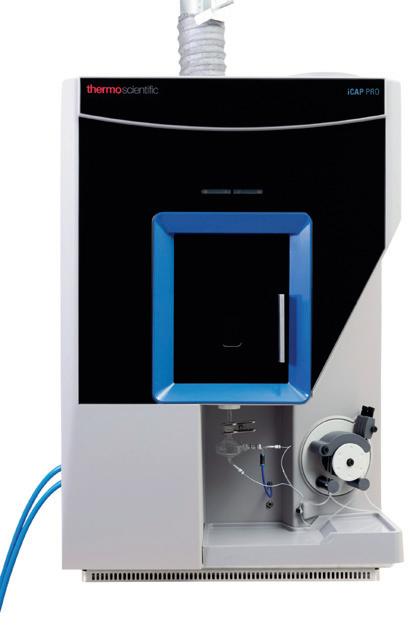
Thermo Fisher Scientific www.thermofisher.com.au
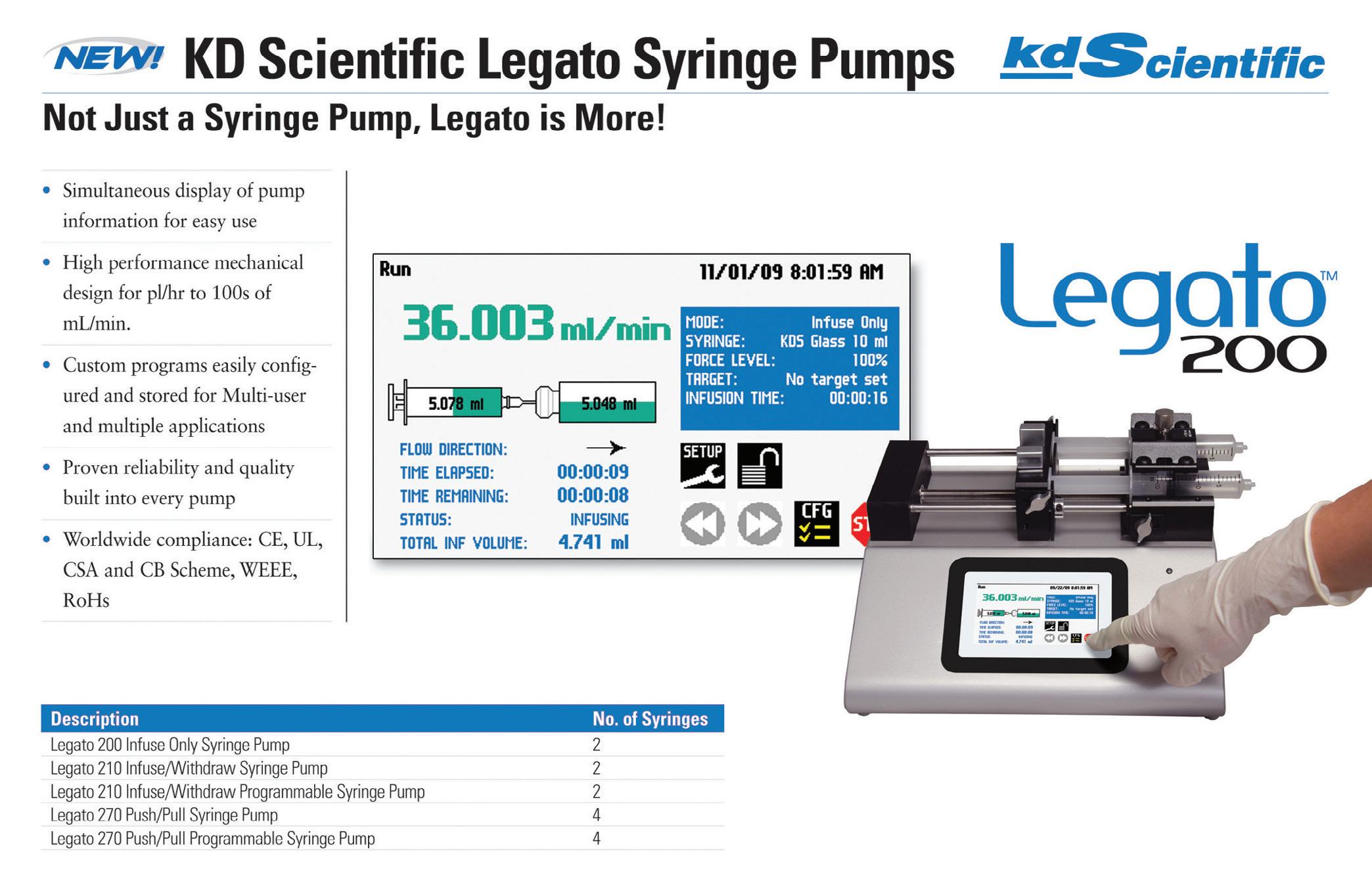


Cyanide Analysis You’ll Love!
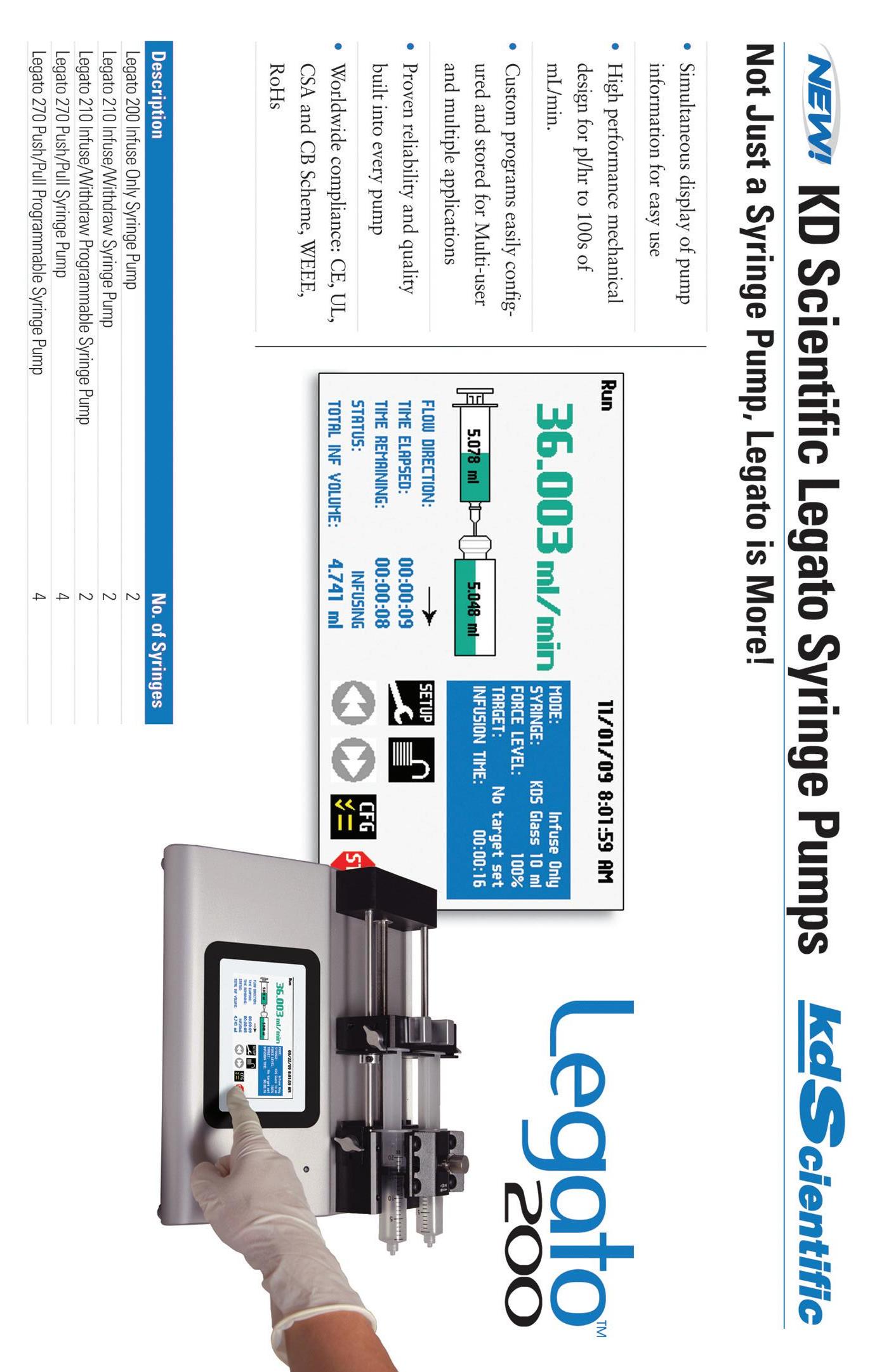
ACE2 and lung stable cell lines for COVID-19 research
GeneCopoeia offers collections of cell lines expressing human host factors needed for SARS-CoV-2 infection as well as labelled cancer cell lines, which include five lung cancer cell line derivatives.
Angiotensin-converting enzyme 2 (ACE2) has been identified as a functional receptor for SARS-CoV1 and a potent receptor for 2019-nCoV2. ACE2 is a carboxypeptidase that potently degrades angiotensin II to angiotensin 1–7, playing a key role in the reninangiotensin system (RAS). GeneCopoeia carries a HEK293T cell line expressing ACE2, the receptor needed for SARS-CoV-2 infection in humans.
In addition to the ACE2 stable cell line, the company also offers lung cancer cell lines, which contain both firefly luciferase and GFP or GFP alone, integrated into the genome. These are valuable for COVID-19 coronavirus research since the SARS-CoV-2 virus enters the body via lung epithelial cells, and can be used for drug target identification and compound screening either in vitro or in vivo.
United Bioresearch Products Pty Ltd www.unitedbioresearch.com.au
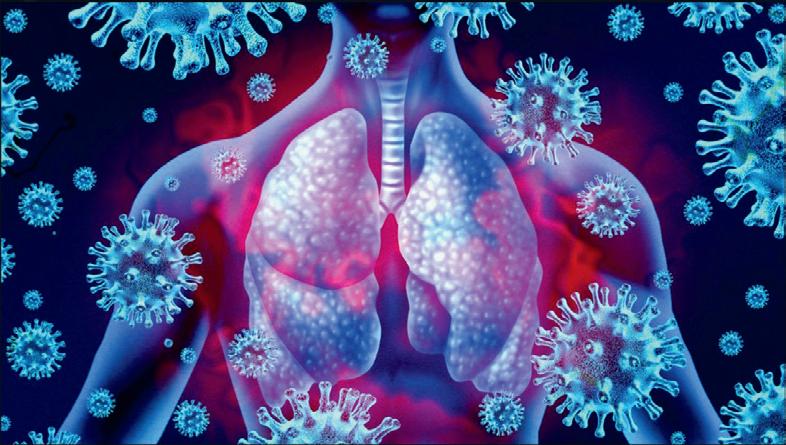
NATA accredited cleanroom certification
Airepure NATA certified technicians are accredited to perform various compliance tests to validate cleanrooms to meet Australian Standard specifications, ISO cleanroom classifications and relevant state or industry requirements.
The company’s experienced technicians are familiar with various positive pressure (or in some instances negative pressure) cleanroom environments, and can assist with their customers’ specific validation requirements — including hospital, pharmacy, manufacturing and PC4/PC4 rated exhaust filtration containment installations.
The company can also test and validate cleanroom equipment, including clean workstations/laminar flow cabinets, Class 1 and Class 2 biological safety cabinets, fume hoods (both recirculating and non-recirculating), pharmaceutical isolators and cytotoxic cabinets.
Airepure Australia is a national air filtration company providing professional, on-site NATA accredited testing and certification services to help organisations meet and maintain Australian standards for controlled environments, and to help ensure the conformance, ongoing safety and operating efficiency of contamination control equipment.
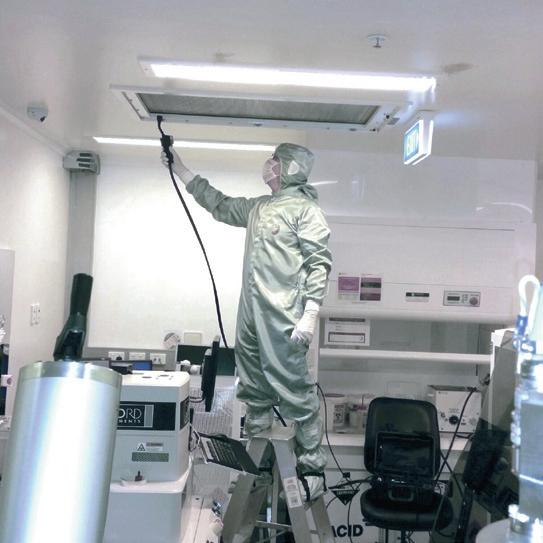
Airepure Australia Pty Ltd www.airepure.com.au
Automated liquid handling system
Whether it is for nucleic acid purification, PCR set-up or general liquid handling, the epMotion 5075t liquid handling system fully automates
routine pipetting tasks in the lab to increase productivity and throughput.
The epMotion 5075t has 14.5 deck positions, 14 SLAS/ANSI plus small position for special reagent reservoir racks to accommodate complex
applications and labware, and an integrated Eppendorf ThermoMixer module with 2D Mix-Control technology can mix, heat or cool samples and
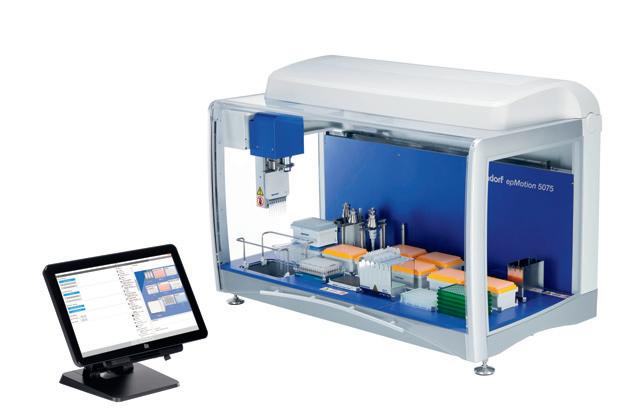
reagents on the deck. The module is software controlled, enabling pipetting onto other worktable positions while the mixer is in operation.
Compatible with a wide range of tubes (0.2 to 50 mL) and microplates (96 and 384 wells), the epMotion 5075t has a gripper tool to transport labware and stack up to five plates on one deck position. The worktable can hold four pipetting tools to dispense volumes in the range of 0.2 to 1000 µL into tubes and plates using Eppendorf’s classic and proven air-cushion technology.
The epMotion 5075t is equipped with a contact-free optical sensor to detect liquids, labware and tips before each run, and an optional CleanCap with UV lamp and HEPA filter minimises cross contamination and provides clean air conditions for PCR set-up. Protocols can be easily programmed by the experienced user or beginner using the epBlue software on either the EasyCon touch screen tablet or MultiCon touch PC.
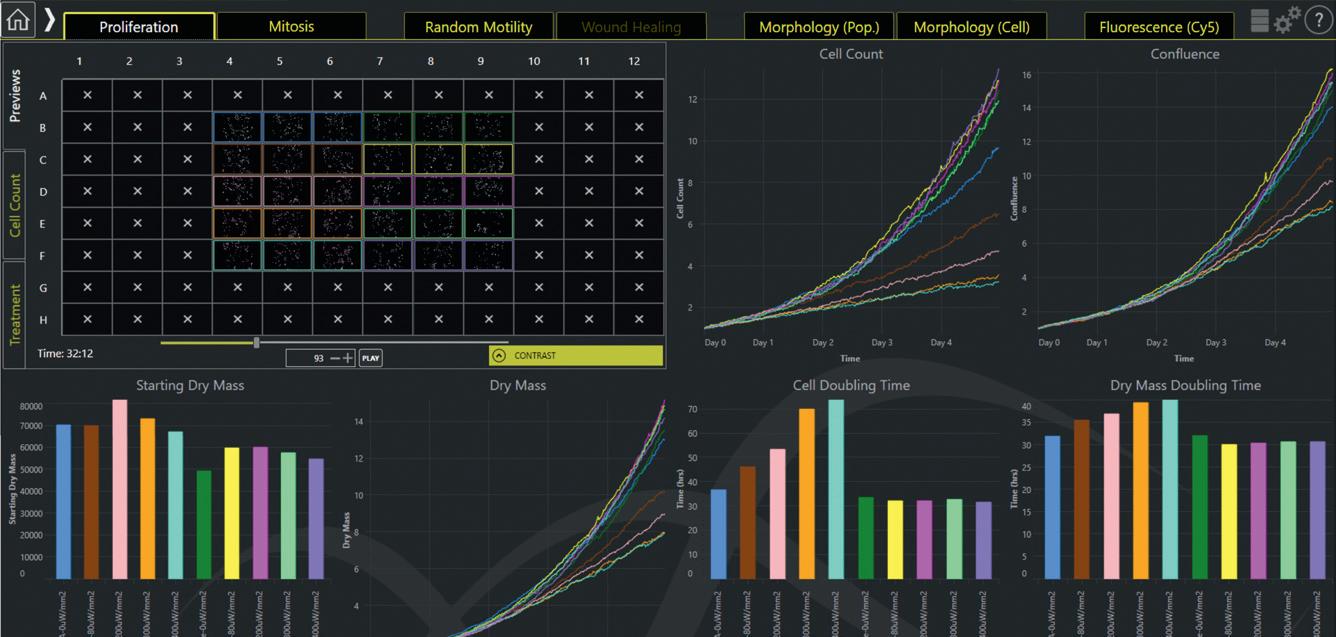
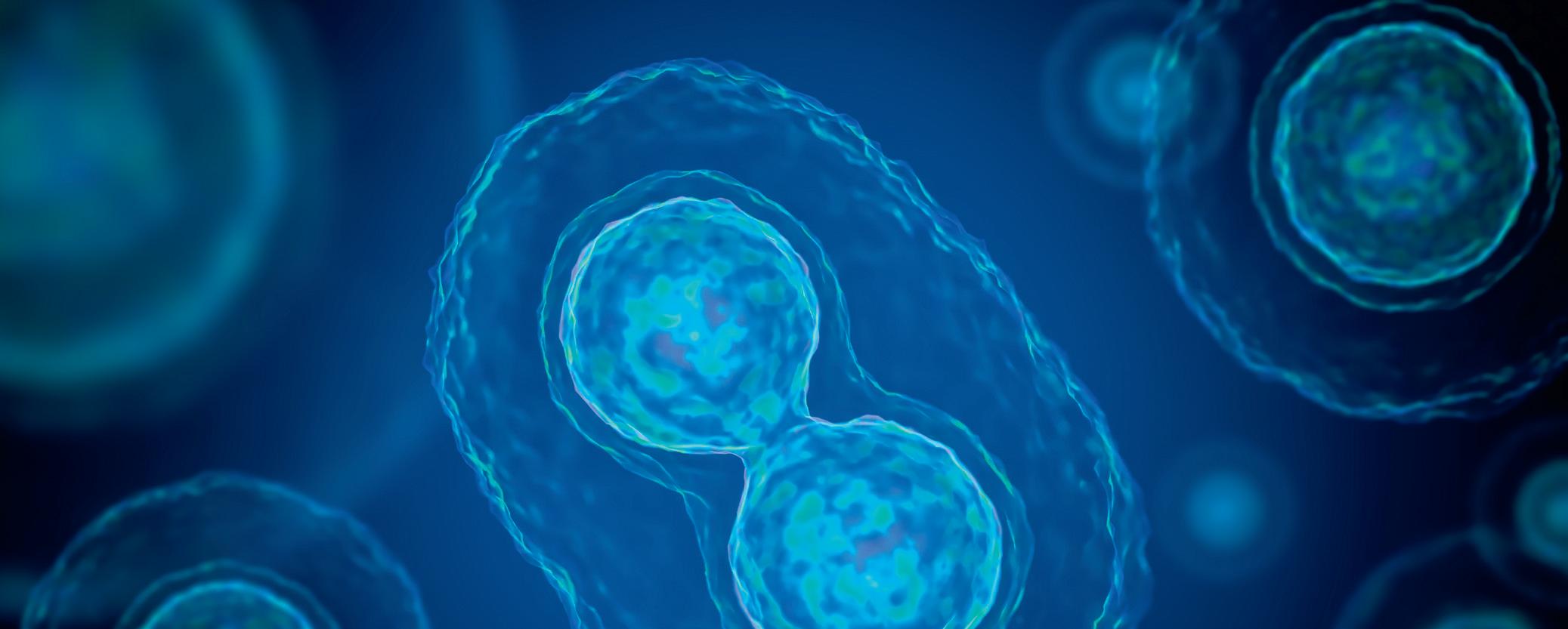
Livecyte — not another microscope! Reveal complex individual cell behaviours and unlock unique insights in every assay.
Live-cell time-lapse microscopy is an established and powerful technique for the study of mammalian cell biology in vitro. Multiple microscopy technologies exist each presenting their own set of benefits and limitations.
Individual cell segmentation and tracking using traditional label-free methods such as brightfield or phase contrast is challenging due to lack of inherent imaging contrast. Fluorescent labels enhance cell contrast but also have the potential to alter normal cell function and induce toxicity. The high-intensity light required to excite fluorophores can also alter cell behaviour and induce cell death largely due to photodamage. A consequence of this is the subtle changes in cell morphology, motility and proliferation that may have unforeseeable effects on experimental outcomes that are often overlooked. Why aren’t conventional systems delivering? The loss of true data is increasingly normalised; subtle phenotypical changes are lost due to deficient modalities forcing constant compromises to gain contrast. Throughput often trumps detail! In an attempt to create a stable environment of temperature and humidity, some microscopes are subjected to a life in an incubator, leaving them prone to mould and degradation of electronic componentry leading to unanticipated repair costs. Microscopy seems to have moved from an investigatory tool to a mass screening machine. Remember — the devil is in the detail! So how do we do this better? Ideally, live-cell imaging needs to identify and track individual cells for prolonged periods without the need for perturbing labels and provide high-contrast images under low levels of light intensity, to preserve natural behaviours and allow recovery of cells for subsequent experimentation or downstream analysis.
The ability to segment and track individual cells and their generational lineages is paramount for accurate quantification of cell behaviour. A continuous, large field of view with no loss of resolution or focus that permits even highly motile cells to be tracked during time-lapse imaging can prevent potentially important cells from being lost or overlooked.
Information-rich reliable data is key where each experiment automatically yields a plethora of phenotypic parameters such as cell thickness, volume, dry mass in addition to kinetic behaviour characterised by cell speed, displacement and confinement ratio. Imaging systems should be easy to use, require no calibration and no dedicated consumables, and have no hidden costs. Phasefocus Livecyte delivers all of this! Phasefocus Livecyte generates high-contrast, fluorescent-like images, using low-powered illumination (4–7 µW/mm 2 ) in which cells appear as bright objects on a dark background. The enhanced contrast in combination with phase retrieval data increases the robustness of singlecell segmentation and tracking algorithms without the need for dyes or probes. This form of quantitative phase imaging (QPI), ptychography, is an emerging imaging technique that retrieves phase-delay of light passing through a cell. Livecyte can provide you with data not available with any other instrument. How can you extract more knowledge from your assays? Livecyte can extract the changes in morphology, motion and dry mass of each cell over time. This leads to a more complete characterisation of cell phenotypic properties. Tracking and analysis of individual cells, along with population metrics, to monitor cell speed and directionality of migration together with cell proliferation can allow greater insights into biological processes. Livecyte offers the versatility to measure and monitor sensitive cell types such as primary cells, patient-derived cells and stem cells. These types of cells are much closer to their natural origins compared with immortalised cell lines, providing a more realistic account of cell behaviour in response to treatment conditions. Livecyte can also perform correlative fluorescence and brightfield imaging. Dry mass — a class above confluence You know from your cultures that cells spread out, ball up and grow without dividing, and their division is not always symmetrical. Given confluence simply measures the change in plate coverage by cells; relying on this rudimentary metric alone clearly results in unacceptable misleading outcomes. Dry mass is the summed mass of all cellular components excluding water. As such, the dry mass measurement is an accurate measure of cell size, accounting for the extent of biosynthetic and degradative processes in addition to uptake and expulsion material by the cell. Achieve more from one experiment Livecyte enables a vast array of metrics to be calculated and combined to perform a number of applications such as true proliferation, advanced scratch wound, cell motility, mitotic time and morphology. Within each dashboard application there are a wealth of outputs. Imagine this kind of depth of analysis for every dashboard, for every well, for every cell, for every experiment. Only one thing to do! Contact us at ATA Scientific and discover more.
ATA Scientific Pty Ltd www.atascientific.com.au
© Stock.Adobe.com/ kwanchaift
National Science Week 2020 August 15–23, online National Science Week is switching to being a digital and at-home festival this year. The 2020 edition is a special chance to recognise the lifesaving work being done by medical researchers and health professionals, as well as the meteorologists and modellers who supported fighting the bushfires. Virtual tours, online events, DIY science and more will be on offer for homes across Australia. https://www.scienceweek.net.au/
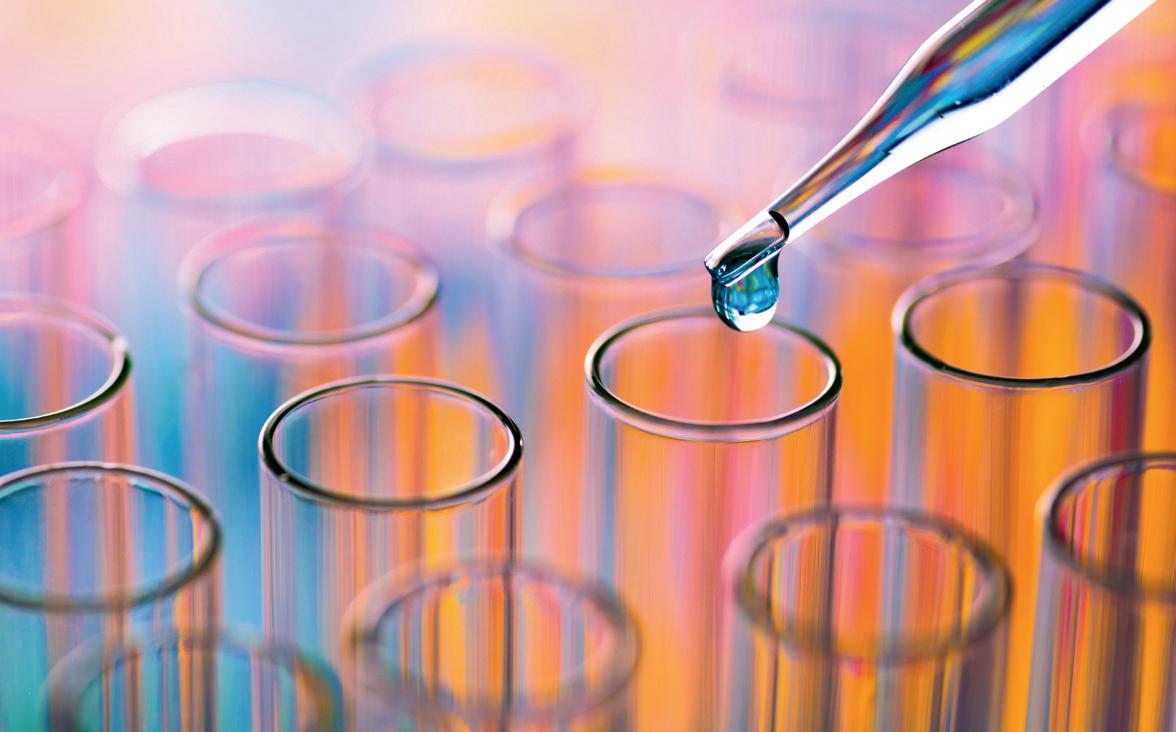
ISLH 2020
June 22–September 25, online https://www.islh.org/2020-virtual/index.php
Agriculture Summit 2020
August 14–15, Melbourne https://agrisummit.net/
FOODCONF 2020
September 21–23, Melbourne https://www.foodconferencesaustralia.com/
AusBiotech 2020
October 28–30, Melbourne https://www.ausbiotechnc.org/
Global Academic Programs (GAP) Conference
November 16–19, online https://www.gap2020.com.au/
Linking the Galactic and Extragalactic
November 30–December 4, Wollongong http://extragalactic-milkyways.org/
Eradicate Cancer 2020
December 14–16, Melbourne https://www.eradicatecancer2020.org/
43rd COSPAR Scientific Assembly
January 28–February 4, Sydney http://www.cospar2020.org/
Lorne Proteins 2021
February 7–11, Lorne https://www.lorneproteins.org/
Science Meets Parliament 2021
March 15–17, Canberra https://scienceandtechnologyaustralia.org.au/whatwe-do/
ASID Annual Scientific Meeting 2021
March 24–26, Melbourne https://www.asid.net.au/meetings/ASM2020
TSANZSRS 2021
April 30–May 4, Melbourne https://www.tsanzsrs2021.com/
IAFS 2020
May 17–21, Sydney https://iafs2020.com.au/
2021 ISFPX and ASP Annual Conference
July 5–8, Cairns https://www.isfpx.org/
20th International Conference on Biological Inorganic Chemistry
July 18–22, Adelaide https://www.icbic2021.org/
6th International Archean Symposium
July 21–23, Perth https://6ias.org/
HGSA 44th Annual Scientific Meeting
August 14–17, Adelaide https://aacb.eventsair.com/hgsa-44th-annualscientific-meeting/
ACS 43rd Annual Scientific Meeting 2021
August 24–28, Queenstown https://acs2020.org.au/
ASCIA 2021 Conference
September 1–3, Melbourne https://www.ascia2021.com/
AACB 58th Annual Scientific Conference
September 28–30, Brisbane https://aacb.eventsair.com/aacb-58th-annualscientific-conference/
Materials Oceania 2021
October 11–14, Brisbane https://www.materialsconferenceaustralia.com/
16th Congress of the FAOBMB
November 22–25, Christchurch https://www.faobmb2021.org/
Westwick-Farrow Media
A.B.N. 22 152 305 336 www.wfmedia.com.au
Head Office Unit 7, 6-8 Byfield Street, (Locked Bag 2226) North Ryde BC NSW 1670, AUSTRALIA Ph: +61 2 9168 2500
Editor Lauren Davis LLS@wfmedia.com.au
Publishing Director/MD Geoff Hird
Art Director/Production Manager Julie Wright
Art/Production Colleen Sam, Veronica King
Circulation Dianna Alberry, Sue Lavery circulation@wfmedia.com.au Copy Control Mitchie Mullins copy@wfmedia.com.au
Advertising Sales
Sales Manager: Kerrie Robinson Ph:0400 886 311 krobinson@wfmedia.com.au
Nikki Edwards Ph: 0431 107 407 nedwards@wfmedia.com.au
Tim Thompson Ph: 0421 623 958 tthompson@wfmedia.com.au
If you have any queries regarding our privacy policy please email privacy@wfmedia.com.au
Printed and bound by Dynamite Printing Print Post Approved PP100008671
ISSN No. 2203-773X
All material published in this magazine is published in good faith and every care is taken to accurately relay information provided to us. Readers are advised by the publishers to ensure that all necessary safety devices and precautions are installed and safe working procedures adopted before the use of any equipment found or purchased through the information we provide. Further, all performance criteria was provided by the representative company concerned and any dispute should be referred to them. Information indicating that products are made in Australia or New Zealand is supplied by the source company. Westwick-Farrow Pty Ltd does not quantify the amount of local content or the accuracy of the statement made by the source.
FREE to industry and business professionals
